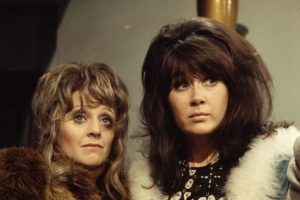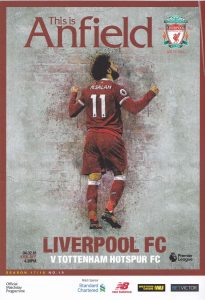Liverpool 2 Tottenham Hotspur 2
Premier League
Sunday 4 February 2018
Teams and goals
Liverpool: Karius, Alexander-Arnold, Lovren, van Dijk, Robertson, Can, Henderson (Wijnaldum 65), Milner (Matip 78), Salah, Firmino, Mane (Oxlade-Chamberlain 65). Unused subs: Moreno, Mignolet, Ings, Solanke.
Tottenham: Lloris, Trippier, Sanchez (Lamela 71), Vertonghen, Davies, Dier, Dembele (Wanyama 79), Son (Llorente 92), Eriksen, Alli, Kane. Unused subs: Vorm, Sissoko, Aurier, Winks.
Goals: Liverpool, Salah 3, 91; Tottenham, Wanyama 80, Kane 95.
Att: 53,213


